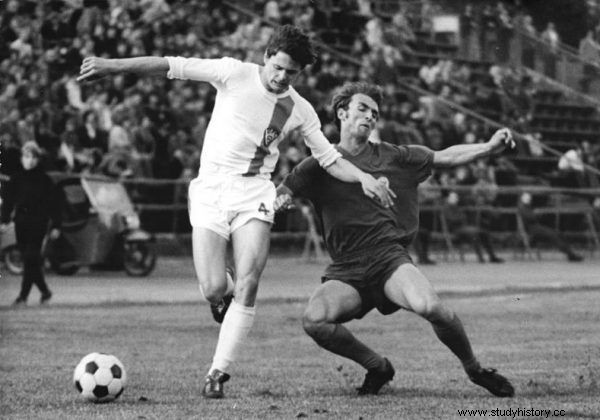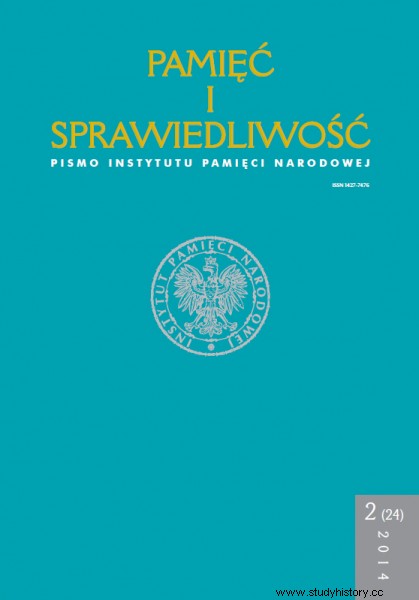The flight of sportsmen from communist countries to the West was a problem common to all "demoludes". This, of course, also applied to Polish footballers. Thanks to Sebastian Pilarski's research, we learned the scale of this phenomenon among Ekstraklasa players.
The first footballer who decided to escape from the Polish People's Republic was Herbert Henryk Pohl (not related to the famous Ernest), a player of Górnik Zabrze. Although he was judged to have a "positive attitude to the People's Authority," in 1957 he abandoned the Polish youth team in East Germany and "fled" to West Germany, which deserved to be called a traitor to his homeland.
His example was followed by others, incl. Helmut Dudek from Szombierek Bytom, who escaped to the West via Yugoslavia in 1976. In 1979, he won the UEFA Cup with Borussia Mönchengladbach and became the first Pole to boast a European football trophy.
For bread, sir, for bread?
As Sebastian Pilarski from the Łódź branch of the Institute of National Remembrance in Łódź writes, it was the players of Silesian clubs (mainly Górnik) who most often decided to emigrate illegally , choosing the western part of Germany as the place of settlement. Family considerations were important in making such decisions - many refugees were able to prove their German origin.

Lutz Eigendorf was one of the greatest talents in the history of GDR football. He paid the highest price for his escape to Germany (photo:Thomas Lehmann, Bundesarchiv, Bild 183-P00521-0033 / CC-BY-SA).
The motives for the escapes were different, for example Marek Leśniak from Pogoń Szczecin tried to avoid the two-year working-off in Legia Warszawa . His case is very interesting indeed. He voluntarily left the training camp of the Olympic team in Copenhagen and went to Germany. When the Polish authorities found out about it, they decided to persuade him to temporarily return to the country and then allow him to legally leave so that he could sell him to Bayer Leverkusen for valuable foreign currencies.
The most common reasons for the escapes were economic issues. The whole phenomenon intensified especially in the 1980s, which may be related to the deteriorating economic and political situation in the country. Many players also wanted to follow Zbigniew Bonek's footsteps.
Not all escapees were as lucky as the aforementioned Helmut Dudek. In 1972, the first Pole in the Bundesliga, Waldemar Piotr Słomiany (Górnik Zabrze's footballer in Poland), was disqualified for two years for participating in match-fixing . Eugeniusz Piechaczek (Odra Opole) was also involved in the practice.

The material is based on a scientific article published in the periodical "Memory and Justice".
How many actually were there?
Sebastian Pilarski concludes that k the press and materials collected in the archival resources of the Institute of National Remembrance allowed for the identification of the names of almost fifty Polish 1st league players who illegally stayed abroad and this list is by no means exhaustive. By comparison, from 1978 to 1983, the authorities allowed 93 players to be legally transferred to the Western club.
It is worth emphasizing that the Polish players did not suffer such consequences as refugees from the GDR or Romania. The case of the German Lutz Eigendorf is the most drastic. Stasi first broke his marriage by surrounding his wife with admirers, and in 1983 killed a footballer simulating a car accident.
The source of the above news is:
Sebastian Pilarski, "He refused to return to the country" - footballers escaping from the Polish People's Republic to the West , "Memory and Justice", 2014, No. 2 (24), 387 - 421.
